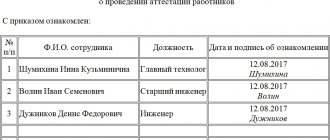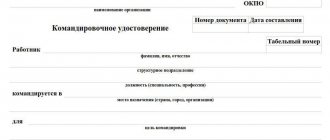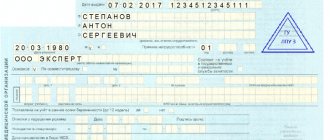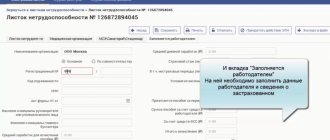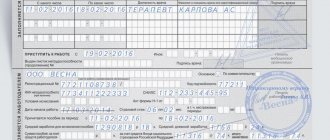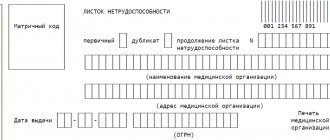What are regulations
Regulatory acts include any documents that are developed at an enterprise and that are aimed at organizing relations between an employer and a subordinate, forming a work process, creating internal and external connections, etc.
In particular, the following are considered regulatory acts:
- orders and instructions from management;
- inner order rules;
- occupational health and safety rules;
- other similar documents.
It should be noted that regulations may be temporary or permanent, but they are always strictly valid only in the company in which they are issued and issued on behalf of the director or administration of the company.
All internal regulations must be developed strictly in accordance with the legislation of the Russian Federation and take into account the interests of both the employer and his subordinates.
The procedure for adopting local acts
The creation of each local normative act goes through several stages: development, coordination, approval, implementation.
This procedure can, in turn, be established by a local act, for example, a regulation on the procedure for adopting local regulations of an organization. The development of local acts is carried out by a working group created on the basis of an order from the employer or by an appointed executive employee. Depending on the purpose of the local act, such a task can be entrusted to a personnel employee (for example, developing a draft internal labor regulations), a chief accountant (creating regulations on the remuneration system), heads of structural divisions (developing job descriptions), etc.
At the same time, as a rule, each developed local regulatory act undergoes a coordination procedure with specialists from other services - accounting, personnel department, legal department, etc.
Visa officers can express their disagreement or comments on the draft document on a separate approval sheet. After final approval, the local act is submitted to the manager for approval.
In cases provided for by the Labor Code, other federal laws and other regulatory legal acts of the Russian Federation, collective agreements, agreements, before making a decision, the employer in accordance with Art. 372 of the Labor Code of the Russian Federation sends a draft local regulatory act and justification for it to the elected body of the primary trade union organization, representing the interests of all or the majority of workers (representative body of workers). This body, no later than five working days from the date of receipt of the draft act, sends the employer a reasoned opinion on it in writing.
If the reasoned opinion of the elected body of the primary trade union organization does not contain agreement with the draft local regulatory act or contains proposals for its improvement, the employer may agree or is obliged, within three days after receiving the reasoned opinion, to conduct additional consultations with the elected body of the primary trade union organization of workers in in order to achieve a mutually acceptable solution.
If agreement is not reached, the disagreements that arise are documented in a protocol, after which the employer has the right to adopt a local normative act, which can be appealed by the elected body of the primary trade union organization to the relevant state labor inspectorate or to the court. The elected body also has the right to initiate the procedure for a collective labor dispute in the manner established by this Labor Code of the Russian Federation.
note
Upon receipt of a complaint (application) from the elected body of the primary trade union organization, the State Labor Inspectorate is obliged to conduct an inspection within one month and, if a violation is detected, issue the employer an order to cancel the specified local normative act, which is mandatory for execution.
If agreement is reached, the act is approved by the head of the organization or other authorized person.
A local regulatory act comes into force on the date of its adoption by the employer or from the date specified in this local regulatory act, and applies to relations that arose after its entry into force.
After approval, the local regulatory act should be registered in the appropriate journal.
In addition, in accordance with Part 2 of Art. 22 of the Labor Code of the Russian Federation, the employer is obliged to familiarize employees, against signature, with the adopted local regulations directly related to their work activities. For persons hired, this must be done before signing an employment contract.
The employer determines how to familiarize the employee with local regulations. This may be a familiarization sheet, drawn up as an appendix to a local act or to an employment contract, or it may be a separate accounting form.
What is a sheet of familiarization with local regulations
Information that a company employee has read a particular regulatory act is entered into a special familiarization sheet .
This document is very important, because if any disagreements and conflicts reach the labor inspectorate or the court, it can become proof of correctness, both on the part of the employer and on the part of the subordinate (depending on how the situation developed). events).
That is why signatures on the familiarization sheet should be collected carefully and scrupulously. It is unacceptable to let any of the company’s employees through, much less forge their autographs. If one of the employees for some reason did not sign the sheet of familiarization with the regulatory act (for example, due to illness, vacation or business trip), you must wait for his return and take the signature.
Responsibility for failure to familiarize employees with LNA
Familiarization with local regulations under the Labor Code of the Russian Federation is regulated by Article 22. It states that the employer is obliged to familiarize employees, upon signature, with the adopted LNA, directly related to their work activities. It follows from the article that the employer’s obligation to familiarize himself with local regulations must be observed. If the organization does not provide for keeping a log of familiarization with LNA and the employer does not familiarize employees with the documents in any other way, then he is punished in accordance with Art. 5.27 of the Code of Administrative Offenses of the Russian Federation, which entails a warning or the imposition of an administrative fine:
- From 1000 to 5000 - for officials.
- From 1000 to 5000 - for persons carrying out entrepreneurial activities without forming a legal entity.
- From 30,000 to 50,000 - for legal entities.
Judicial practice shows that an employee who is not familiar with the organization’s LNA and has not signed the journal is not held accountable if he improperly performs his job duties (Bulletin of Judicial Practice of the Amur Regional Court No. 4 for 2022). In this situation, the blame falls entirely on the employer, and this is regarded as a violation of labor laws.
What happens if you don’t sign the document?
Each employee has the right to sign this or that regulatory act or refuse it.
An employer cannot force a subordinate to familiarize himself with a document, nor can he impose any disciplinary sanction for refusing to do so.
The only thing that an employee should take into account if he does not want to read the normative act and sign a sheet of familiarization with it is that at some point a situation may arise in which the information contained in the document may turn out to be very useful.
Structure of the familiarization magazine
The document consists of several sheets. It most often records:
- local acts approved at the enterprise for the period of provision of the document to the employee for signature;
- FULL NAME. and positions of employees who must sign;
- departments of the enterprise where personnel work;
- dates of personnel familiarization with internal papers.
The structure of the journal also provides columns for the signatures of employees certifying that they are familiar with the necessary list of internal regulations.
The magazine is approved by the head of the enterprise.
How to create a document
Unified forms of primary personnel and accounting documents have been abolished since 2013 (with some exceptions), therefore a sheet on familiarization with local regulations can be drawn up by employees of the organization in any form or according to an internal template.
The only thing is that when creating the form, you must follow a certain structure and rules of the Russian language.
In the “ header ” of the sheet you should indicate:
- name of the enterprise;
- Title of the document;
- number, date and essence of the regulatory act, which the employee signs for reading.
Next, it is recommended to make a table in which you need to enter:
- employee serial number;
- last name, first name and patronymic of the employee;
- job title;
- date of familiarization with the act;
- signature.
If necessary, you can add other columns here (for example, about the structural unit in which the employee works or some notes).
If there are many employees who are affected by the normative act, then several sheets may be required for their signatures. All of them need to be fastened together (you can use a stapler, but better with a strong thread) and numbered.
The procedure and timing for studying the organization's LNA employees
The procedure for familiarizing employees with local regulations is legislatively regulated by Article 68 of the Labor Code of the Russian Federation. According to its third part, it is the employer’s responsibility to introduce the new employee to the documents against signature. An approximate list of documents for an employee to study:
- PVTR (internal labor regulations);
- Regulations on trade secrets;
- Regulations on remuneration;
- shift schedule;
- job descriptions;
- Regulations on the protection of personal data;
- Regulations on employee certification;
- provisions related to labor protection in the company;
- Regulations on the company's personnel;
- Regulations on the structural unit;
- Regulations on bonus payments to employees;
- Regulations on business trips;
- instructions for office work;
- collective agreement (if any).
A signature in the employee familiarization log with local regulations is placed upon hiring until the employee signs the employment contract.
The Rostrud report explains in more detail what documents the employed employee reads and signs in the sheet for familiarization with local regulations in the company. It contains information on compliance with mandatory requirements when hiring a new specialist and an analysis of the requirements of regulatory legal acts for the 2nd quarter of 2018.
IMPORTANT!
As for the period of familiarization with the local regulations of the employer, the documents in force in the organization are introduced upon hiring, and then when working conditions change. The period for employees to get acquainted with the newly adopted document depends on the nature of the changes being made: if these are changes in the PVTR or the remuneration system, then for such cases the mechanisms prescribed in Articles 72 and 74 of the Labor Code of the Russian Federation are provided; if the changes do not concern the essential terms of the employment contract, then employees familiarize them with them within a time period, usually not exceeding three working days from the date of their publication and signing by management.
How to draw up a document
The familiarization sheet can be written on a simple A4 sheet or on the company’s letterhead - it does not matter, just as whether it will be drawn up by hand or on a computer.
It is important that the document contains the original signatures of those employees of the enterprise to whom it concerns.
It is not necessary to certify the form with the organization’s seal, since starting from 2016, legal entities have the right not to use stamps to certify their papers (unless otherwise stated in the company’s constituent documentation).
After creation, the sheet must be endorsed in the internal documents journal.
How to create a familiarization sheet: example
Usually the familiarization sheet is compiled in a single copy on an A4 sheet. It can be generated on a computer and printed, or it can be prepared by hand - the first option is preferable simply because it is more convenient and the result is more accurate. It is not necessary to certify the document with the seal of the enterprise and the signature of the director.
There is no approved form of the familiarization sheet; you can develop it yourself. The form used must be approved - this can be done by issuing an appropriate order, or by including it in the office management instructions in force at the enterprise.
On our site you can use Word to create your own document. If necessary, you can supplement the proposed form with additional columns and columns.
Download the form for familiarizing yourself with the order
Download a completed sample order familiarization sheet
Download a sample of the order without a familiarization sheet
On the acquaintance sheet you should indicate:
- name of the document – “Familiarization Sheet”;
- details of the order that employees must be familiar with (its name - for example, an order on vaccination (about coronavirus), number and date of preparation).
The tabular component of the sheet can look like this:
| No. | FULL NAME. | Job title | Signature | Date of review |
Another form of the tabular part of the familiarization sheet is also acceptable, consisting of only two columns:
| The order has been submitted (indicating the date of review) | Full name, signature |
The number of rows in the table must correspond to the number of employees who need to be familiarized with the order. It’s okay if there are more of them - you can simply cross out the free lines to avoid the possible inclusion of additional information in the document later.
The familiarization sheet is drawn up on the day the order is issued, or within one to two business days after the document is drawn up.
What should I include in the PVTR?
What exactly should be written in the rules? Let’s look at this issue using this table as an example.
Table No. 1. Sections of internal labor regulations.
| Section title | Content |
| Procedure for hiring employees | This block reflects information about the papers submitted by the employee when hiring, details the procedure for admission to work, the procedure for concluding an employment contract, issuing an order, and entering relevant information into the work book. The basis is Chapter 11 of the Labor Code of the Russian Federation. |
| The procedure for dismissing employees | Here you need to specify the grounds and procedure for terminating employment relationships with employees. The company does not have the right to include in the text any additional grounds for termination of the employment contract, other than those listed in the Labor Code of the Russian Federation. The basis is Chapter 13 of the Labor Code of the Russian Federation. |
| Basic rights and obligations of hired persons | When developing this section, you can take Art. 21 Labor Code of the Russian Federation. |
| Basic rights and obligations of the employer | When writing this section, you can take Art. 22 Labor Code of the Russian Federation. |
| Responsibility of the parties | Rules regarding financial liability of the employer and employees. The employer does not have the right to supplement or change the liability rules provided for by law, since they are inherently mandatory. It is necessary to take section XI of the Labor Code of the Russian Federation as a basis. |
| Operating mode | In this block you need to indicate the operating mode that is used in a particular organization. The basis is Chapter 16 of the Labor Code of the Russian Federation. |
| Time relax | All non-working periods are indicated here - vacations, weekends and public holidays, breaks during the working day or shift. In this case, the employer does not have to indicate non-working holidays in the document, since they are established by law. The basis is section V of the Labor Code of the Russian Federation. |
| Employee incentives | In this block you need to list the main types of incentives for work:
It is not necessary to describe the bonus mechanism in the PVTR; this can be done in the regulations on remuneration. Basis - Art. 119 Labor Code of the Russian Federation. |
| Penalty measures | This section lists the disciplinary sanctions applied to representatives of the workforce, namely:
For certain categories of employees, the legislator allows the use of special types of penalties. Imposing other types of penalties is illegal. Basis - Art. 192 Labor Code of the Russian Federation, Art. 193 Labor Code of the Russian Federation, Art. 194 Labor Code of the Russian Federation, Art. 195 Labor Code of the Russian Federation. |
Let us recall the main features of LAD
In defining the concept of “local normative acts” (hereinafter referred to as LNA), Art. plays an important role.
8 Labor Code of the Russian Federation. It stipulates that these are documents that the organization creates within the framework of its competencies, based on the norms of labor legislation. Another important point is that local regulations are designed for repeated application for all or several employees. This means that a leave order for a specific employee, an employment contract or a shift schedule cannot be considered as LNA. LNAs are of a subordinate nature, specify the norms of federal legislation, and clarify the specifics of working for a certain employer or in a certain position. These documents allow you to automate and unify many processes in the organization.
It is very important to remember that LNA cannot worsen the employee’s situation in comparison with the norms of centralized legislation. For example, the Internal Labor Regulations may provide for increased additional leave for certain categories of employees, but in no case can the leave be less than that established by law.
In this case, the employer’s local regulations must be brought to the attention of the employee against signature. If he does not comply with the provisions of the personnel document, he can be subject to disciplinary action. In case of violations, the organization faces administrative liability.
Employers - legal entities and individual entrepreneurs, if they do not belong to micro-enterprises - can and are required to issue and approve LNA.
Important! From 2022, micro-enterprises can refuse to approve all or several LNAs. This right is granted to them by the new chapter of the Labor Code of the Russian Federation - Ch. 48.1 (Federal Law dated July 3, 2016 No. 348-FZ). Let us recall that the criteria for micro-enterprises also underwent changes not long ago (clause 10, article 10 of the Federal Law of December 29, 2015 No. 408-FZ).
